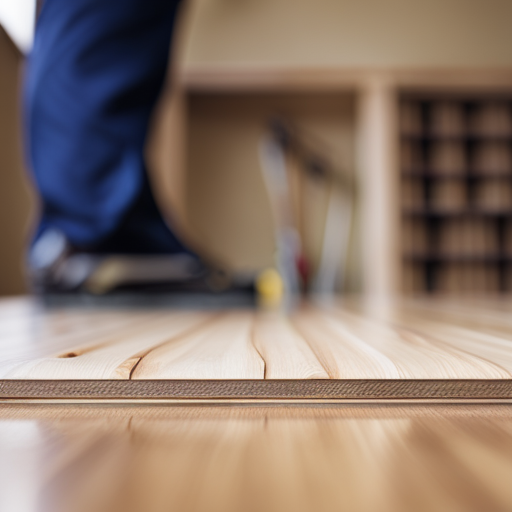
This article aims to provide informative, detailed, and practical guidance on the process of obtaining repair glue in grounded situations.
The content will be presented in an academic style that is objective and impersonal, devoid of personal pronouns.
By following the recommendations outlined in this article, readers can learn how to:
- Assess damage
- Select appropriate adhesive types
- Gather necessary tools and materials
- Prepare surfaces for gluing
- Apply glue effectively
- Test the strength and durability of repairs
- Address common mishaps and cleanup issues associated with glue use
- Explore alternative repair methods when needed
- Take preventive measures to avoid future breakages.
Assessing the Damage: Identifying the Repair Needs
The first step in the repair process involves evaluating the extent of damage and identifying the specific repair needs. When dealing with a grounded electrical appliance, it is crucial to assess the damage accurately to ensure safety during the repair. Identifying damage includes inspecting both external and internal components for any visible signs of wear, tear, or breakage. This assessment should encompass not only the main body of the appliance but also its cords, plugs, switches, and other related parts.
To assess repair needs effectively, one must consider various factors such as the type and severity of damage, potential risks associated with continued use without repairs, and the availability of replacement parts. Careful examination can reveal issues like frayed wires, loose connections, burnt components or insulation, or even water damage—all of which require immediate attention to prevent further hazards.
Once all damages have been identified thoroughly, determining specific repair needs becomes essential. This could include replacing faulty components or reattaching loose wires securely. It is vital to ensure that all repairs are carried out following proper safety protocols provided by manufacturers or certified technicians.
## Understanding Different Types of Glue: Choosing the Right Adhesive
Understanding the various types of adhesive available is crucial for selecting the appropriate one. When it comes to choosing an adhesive, it is important to consider the specific properties and characteristics of different glues. To help you make an informed decision, here is a table outlining some common types of adhesives and their properties:
| Type of Adhesive | Properties |
|——————|————|
| Epoxy | Excellent bonding strength, resistant to heat and chemicals |
| Cyanoacrylate | Fast-drying, strong bond, suitable for small repairs |
| Polyurethane | Flexible bond, good for materials with different expansion rates |
| Silicone | Good for sealing purposes, water-resistant |
| Hot melt | Quick setting time, versatile |
By understanding these glue properties, you can choose the appropriate adhesive for your repair needs. For example, if you need a strong bond that can withstand high temperatures or exposure to chemicals, epoxy would be a suitable choice. On the other hand, if you are working on a small repair that requires fast drying time and a strong bond, cyanoacrylate would be more appropriate.
It is important to carefully read the instructions provided by the manufacturer before using any adhesive. This will ensure that you use it correctly and safely. Additionally, always work in a well-ventilated area when using adhesives to avoid inhaling fumes.
Overall, understanding glue properties and choosing an appropriate adhesive will not only ensure successful repairs but also promote safety during the repair process.
## Gathering the Necessary Tools and Materials
To successfully prepare for a repair project, it is important to gather all the necessary tools and materials. By having everything you need before starting, you can work efficiently and safely. Here are some key steps to consider when gathering your tools and materials:
– Make a list: Before beginning your repair project, create a checklist of all the tools and materials you will need. This will help ensure that nothing is forgotten during the process.
– Check your inventory: Take stock of any existing tools or materials you may already have on hand. This will save you time and money by avoiding unnecessary purchases.
– Research specific requirements: Different repair projects may require specific tools or materials. Take the time to research what is needed for your particular task to avoid any setbacks or mistakes.
– Safety first: When gathering your tools, prioritize safety equipment such as goggles, gloves, and masks if necessary. Ensuring that you have proper protection will minimize any potential injuries during the repair process.
– Purchase quality items: Invest in high-quality tools and materials to ensure durability and effectiveness. While they may be more expensive initially, they will save you money in the long run by lasting longer and providing better results.
## Preparing the Surface for Gluing
Preparing the surface for gluing involves ensuring that it is clean, dry, and free from any debris or contaminants. Surface preparation is an essential step in any gluing process as it directly affects the strength and durability of the bond. Cleanliness is crucial to promote effective adhesion between the surfaces being joined. Any dirt, dust, grease, or oil on the surface can hinder the bonding process by creating a barrier between the adhesive and the substrate.
To prepare a surface for gluing, start by thoroughly cleaning it using a mild detergent or solvent recommended by the adhesive manufacturer. This will remove any dirt or grease that may be present. After cleaning, ensure that the surface is completely dry before applying any glue. Moisture can interfere with adhesion and weaken the bond over time.
Additionally, it is important to remove any loose particles or contaminants from the surface. Use a soft brush or cloth to gently sweep away dust or debris before applying glue. Any remaining residue should also be removed to achieve optimal bond strength.
## Applying the Glue: Techniques and Tips for Success
Applying glue requires precise techniques and adherence to recommended guidelines in order to achieve successful bonding between surfaces. Here are some tips and techniques to ensure a safe and effective application:
– Clean the surfaces: Before applying the glue, make sure the surfaces are clean and free from any dirt, dust, or grease. Use a mild detergent or rubbing alcohol to remove any contaminants that may hinder the bonding process.
– Apply an even layer: Use a brush or applicator to apply an even layer of glue onto both surfaces. Avoid using too much glue as it can lead to excessive messiness and longer drying times.
– Allow for proper curing time: Different types of glues require different curing times. Make sure to read the instructions on the product packaging and allow sufficient time for the glue to dry. Applying pressure during this time can help enhance bond strength.
– Consider clamping or weighting: In some cases, using clamps or weights can help create stronger bonds by ensuring constant pressure while the glue cures. This technique is particularly useful when working with larger objects.
– Practice safety precautions: Always wear protective gloves and goggles when handling adhesive products. Some adhesives may emit fumes, so be sure to work in a well-ventilated area or use appropriate respiratory protection if necessary.
## Allowing Sufficient Drying Time
Allowing sufficient drying time is crucial for the effectiveness of the bonding process. When using repair glue, it is important to follow proper drying techniques and exercise patience for optimal results. Rushing the drying process can compromise the strength and durability of the bond, leading to potential safety hazards.
Different types of repair glues have varying drying times, so it is essential to refer to the manufacturer’s instructions for specific guidance. In general, it is recommended to wait at least 24 hours before subjecting the bonded object to any stress or pressure. This allows the glue to fully cure and achieve its maximum strength.
To emphasize the importance of patience in allowing proper drying time, consider the following table that illustrates different repair glue types and their corresponding recommended drying times:
| Repair Glue Type | Recommended Drying Time |
|——————|————————|
| Super Glue | 24 hours |
| Epoxy | 48-72 hours |
| Wood Glue | 12-24 hours |
## Testing the Strength and Durability of the Repair
Testing the strength and durability of the repair is essential to ensure its effectiveness and safety in practical application. Adequate testing methods should be employed to assess the reliability and performance of the repaired object. A comparison analysis can help determine if the repaired item meets or exceeds its original strength and durability.
Here are four key points regarding testing methods and comparison analysis:
1. Non-destructive testing: Utilize techniques such as ultrasound, X-ray, or magnetic particle inspection to examine the integrity of the repair without causing any further damage.
2. Load testing: Apply controlled loads or forces to test the repaired area’s ability to withstand stress and strain, simulating real-life usage conditions.
3. Environmental testing: Subject the repaired object to extreme temperatures, humidity levels, or corrosive environments to evaluate its resistance against environmental factors.
4. Long-term durability assessment: Perform extended duration tests under normal operating conditions to measure how well the repair holds up over time.
## Dealing with Common Glue Mishaps and Cleanup
Once the strength and durability of a repair have been tested, it is important to address any common glue mishaps and ensure proper cleanup. This subtopic explores effective techniques for removing excess glue and preventing unsightly stains.
Dealing with Common Glue Mishaps and Cleanup
Accidents happen, and sometimes excess glue ends up in unwanted places. To effectively remove glue residue, there are several techniques that can be employed. One popular method involves using acetone or nail polish remover on a cotton swab or cloth to gently rub away the dried glue. It is crucial to spot test this technique on a small inconspicuous area first, as acetone may damage certain surfaces.
Another approach involves utilizing heat to soften the adhesive. A hairdryer set on low heat can be directed towards the glued area, allowing the warmth to loosen the bond between the surface and the glue. Subsequently, a plastic scraper or credit card can be used to carefully lift off the softened adhesive.
Preventing glue stains is equally essential in maintaining a clean appearance after repairs. Applying painter’s tape around areas that should remain free from glue will act as a barrier, preventing accidental spills or smears onto adjacent surfaces.
## Exploring Alternative Repair Methods
Exploring alternative repair methods involves considering different approaches and techniques that can be employed to address various types of damage or issues. When traditional repair methods are not readily available or feasible, it becomes necessary to explore unconventional alternatives. Testing unconventional methods can lead to innovative solutions that effectively address the problem at hand while ensuring safety.
One approach is using natural adhesives such as plant-based glues, which are non-toxic and environmentally friendly.
Another option is exploring the use of alternative materials like epoxy resin or cyanoacrylate-based adhesives, which have proven to be strong and durable in certain applications.
Incorporating 3D printing technology can also offer unconventional repair possibilities by creating custom-made replacement parts or components.
Additionally, employing advanced techniques such as laser welding or ultrasonic bonding can provide efficient and precise repairs for specific types of damage.
It is important to note that when exploring these alternative repair methods, thorough testing should be conducted to ensure their effectiveness and safety. Understanding the limitations and potential risks associated with each method is crucial in order to make informed decisions regarding their application.
## Taking Preventive Measures to Avoid Future Breakages
Implementing preventive measures is essential to minimize the risk of future breakages and ensure the longevity and reliability of repaired objects or components. By taking proactive steps in preventing accidents and maintaining equipment, individuals can significantly reduce the likelihood of further damage or injury.
One effective way to prevent future breakages is through regular inspections and maintenance. This involves thoroughly checking for any signs of wear or potential weak points in the object or component. By identifying these issues early on, necessary repairs can be made promptly, preventing them from escalating into more significant problems.
Additionally, using appropriate protective measures can help safeguard against accidents. This may involve implementing safety protocols, such as wearing appropriate personal protective equipment (PPE) when working with hazardous substances or operating machinery. It is also important to store repaired objects properly, ensuring they are kept in a secure location that minimizes the risk of accidental damage.
To provide a clearer picture of preventive measures, consider the following table:
| Preventive Measure | Description |
|——————-|————-|
| Regular Inspections | Conduct thorough checks for signs of wear or weakness |
| Maintenance | Perform necessary repairs promptly |
| Protective Measures | Implement safety protocols and use PPE |
| Proper Storage | Store repaired objects securely |
## Frequently Asked Questions
### Can I use regular household glue for repairing in grounded?
Household glue substitutes can be used as alternatives for repairing in Grounded. However, it is important to note that regular household glue may not have the same strength and durability as repair glue specifically designed for this purpose.
### How long does it take for the glue to dry completely?
To speed up the drying process of repair glue, ensure proper ventilation and maintain an optimal temperature and humidity level. Additionally, using a fan or heat source can expedite drying. To remove dried glue from surfaces, gently scrape or use solvents suitable for the specific material being treated.
### What should I do if the repaired item breaks again after using glue?
If the repaired item breaks again after using glue, there are alternative repair methods to consider. It is advisable to assess the nature of the breakage and explore options such as stitching, welding, or reinforcing with additional materials. To prevent items from breaking again, it is important to identify and address any underlying issues that led to the initial breakage. This may involve improving the design or construction of the item, using stronger materials, or implementing proper maintenance practices. Following these steps will help ensure a more durable and long-lasting repair solution.
### Are there any safety precautions I should take when using repair glue?
Safety measures when using repair glue include wearing protective gloves and goggles, working in a well-ventilated area, and avoiding skin contact. Properly store repair glue in a cool, dry place away from direct sunlight and out of reach of children.
### Can I use glue to fix items made of different materials, like metal and plastic?
Different materials require different types of glue for effective repairs. When fixing items made of metal and plastic, it is recommended to use a specialized adhesive that is designed to bond these specific materials together. For glass and wood, a glue suitable for those materials should be used, while for fabric and leather repairs, a specific type of adhesive formulated for textiles should be employed. It is important to follow the manufacturer’s instructions and safety guidelines when using any type of glue to ensure proper bonding and minimize potential risks.
## Conclusion
In conclusion, repairing glue in Grounded requires:
– Assessing the damage
– Understanding different types of glue
– Gathering the necessary tools and materials
– Preparing the surface for gluing
– Applying the glue using appropriate techniques and tips
– Testing the strength and durability of the repair
– Dealing with common glue mishaps and cleanup
– Exploring alternative repair methods if needed
– Taking preventive measures to avoid future breakages
By following these steps, you can effectively repair your items in Grounded and ensure their longevity.



Insightful piece
Outstanding feature
great article
Excellent write-up
Outstanding feature
купить диплом бакалавра [url=https://orik-diploms.com/]https://orik-diploms.com/[/url] .
купить диплом нового образца [url=http://www.landik-diploms.com/]http://www.landik-diploms.com/[/url] .
Excellent write-up
Outstanding feature
Insightful piece
Excellent write-up
In this iconic fighting business, players capture in head-to-head battles, utilizing a roster of characters with unique fighting styles and fatalities. The largest ideal in mortal kombat is to outfight opponents in brutal, high-stakes matches, making it a favorite all of a add up to fighting stratagem enthusiasts.
My pen-pal advised me to study your articles. https://thatsnotmyneighbor.com And I want to suggest that I actually liked your idea. I purposefulness for all combine this site to the bookmarks.